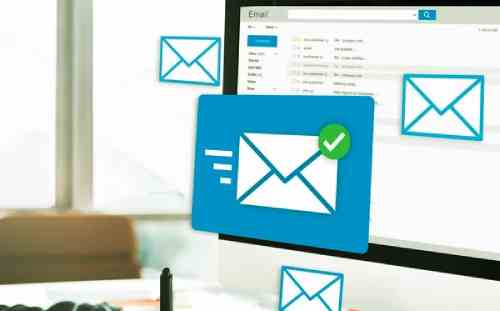Creating DMARC Records Made Easy:
Your Generator Guide
Your Generator Guide
In today's digital landscape, safeguarding your email domain from threats like phishing and spoofing is paramount. DMARC (Domain-based Message Authentication, Reporting, and Conformance) stands as a vital tool in this endeavor. However, navigating the intricacies of DMARC record creation can be daunting. That's where this guide comes in. Here, we'll demystify the process and introduce you to user-friendly DMARC generators, ensuring that fortifying your email security is not just effective but also hassle-free. Welcome to "Creating DMARC Records Made Easy: Your Generator Guide."
Understanding DMARC Records
Before diving into the process of generating DMARC records, it's essential to understand what they are and how they work.
What is a DMARC Record?
A DMARC record, found as a TXT entry in the DNS, dictates the protocol for email receivers to follow when processing messages from a particular domain. It merges SPF and DKIM authentication methods to verify the credibility of emails. These records contain guidelines for email validation, reporting procedures, and details for addressing policy breaches. They are essential in thwarting email impersonation, phishing attempts, and other illicit behaviors.

Components of a DMARC Record
- Policy: The receiving mail server is instructed on how to respond to an email that does not pass authentication checks, with the available choices being none, quarantine, or reject.
- Percentage: The pct parameter, which is optional, enables senders to indicate the proportion of emails that should adhere to the policy outlined in the DMARC record. Its main purpose is for monitoring email activity.
- Reporting: DMARC enables organizations to gather feedback from email recipients regarding the authentication status of emails. By analyzing these reports, organizations can identify the origins of fraudulent emails and enhance their email authentication protocols. Enhance your comprehension of the DMARC record generator.
Choosing a DMARC Record Generator
Now that you understand the basics of DMARC records, let's explore how to create them using a generator tool. There are several DMARC record generators available online, each offering different features and functionalities. When choosing a generator, consider the following factors:
- Ease of Use: Look for a generator that offers a user-friendly interface and straightforward instructions. The process of creating DMARC records should be intuitive and accessible to users with varying levels of technical expertise.
- Customization Options: Various organizations possess unique security needs and email systems. An effective DMARC generator should offer the flexibility for users to tailor their DMARC records to meet individual requirements. This includes the ability to set policy preferences, establish reporting schedules, and designate contact information for receiving DMARC reports.
- Reporting Capabilities: DMARC's reporting feature is a valuable asset, offering detailed information on email authentication failures to help organizations detect and address security risks. Opt for a DMARC generator with strong reporting features to effortlessly view and analyze the reports generated by email recipients.
- Compatibility: Ensure that the DMARC generator you choose is compatible with your email service provider and DNS management platform. This will ensure seamless integration and prevent any compatibility issues that may arise when publishing your DMARC records.

Generating DMARC Records
Once you've chosen a DMARC generator that meets your requirements, follow these steps to create your DMARC records:
- Access the Generator: Go to the website of the DMARC generator you've selected and navigate to the DMARC record creation tool.
- Provide Domain Information: Please provide your domain name and any additional details needed by the generator, like your email address for receiving DMARC reports.
- Customize DMARC Policy: Choose the desired action for handling emails purportedly originating from your domain (options include none, quarantine, or reject), and provide any extra details like the percentage of emails to which the action should be enforced.
- Generate DMARC Record: Click the "Generate DMARC Record" button to create your DMARC record. The generator will provide you with a unique TXT DNS record that you can publish in your domain's DNS settings.
- Publish DMARC Record: Copy the generated DMARC record and publish it in your domain's DNS settings. Depending on your DNS management platform, this may involve accessing your DNS control panel and adding a new TXT record with the provided DMARC information.
- Monitor DMARC Reports: Once your DMARC record is published, monitor the DMARC reports generated by email receivers. These reports will provide insights into the authentication status of emails claiming to be from your domain and help you identify and address any issues that arise.